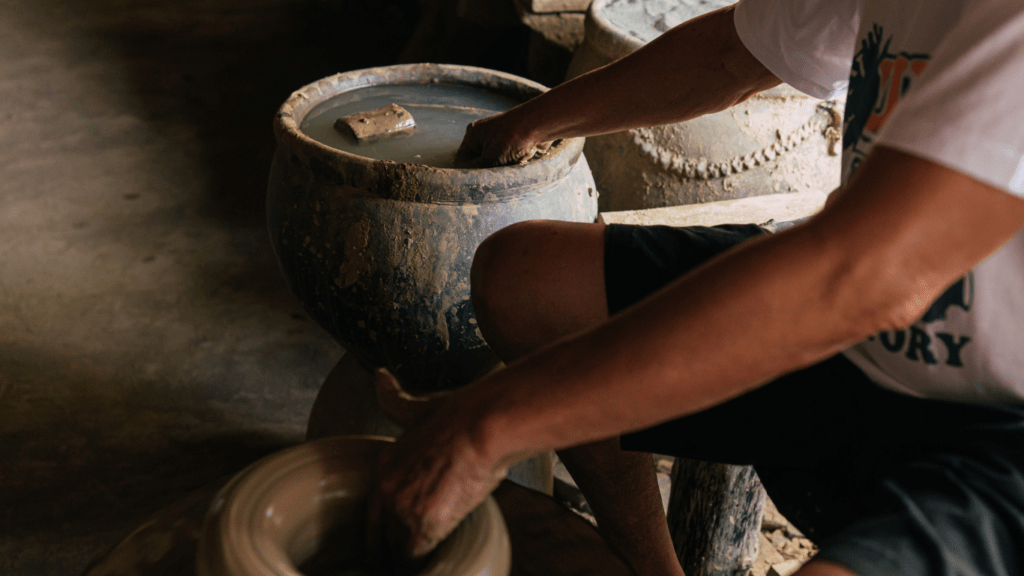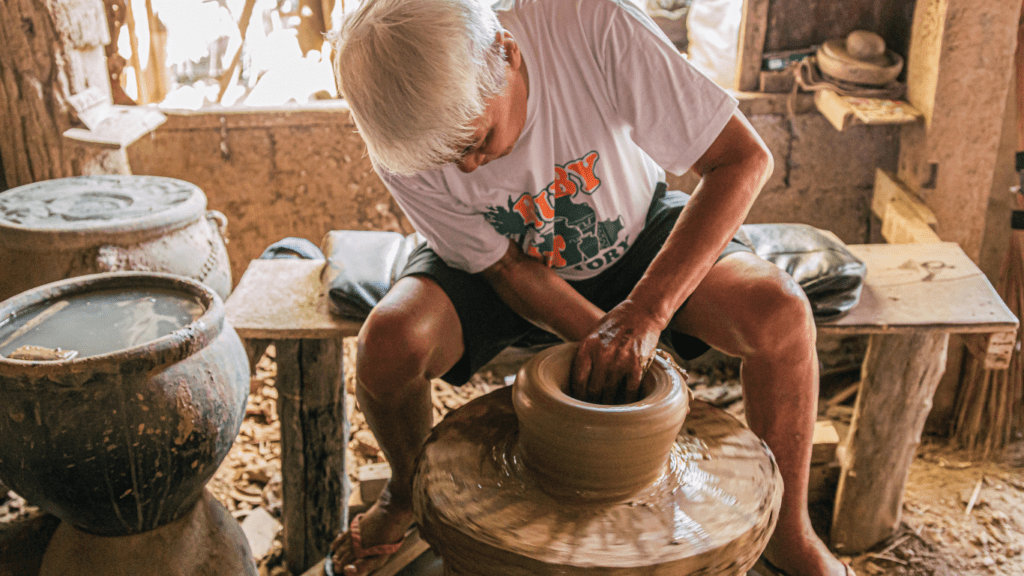Understanding Art Therapy
Art therapy combines creative expression with psychological support to improve mental and emotional health.
What Is Art Therapy?
Art therapy uses artistic methods to help individuals communicate, explore emotions, and foster self-awareness. Professionals trained in both art and therapy guide these activities, ensuring safe and constructive sessions. Seniors often use mediums like:
- painting
- drawing
- sculpting
to express themselves when words fall short.
How It Differs From Traditional Therapies
Art therapy contrasts with traditional therapies by focusing on non-verbal communication. Instead of just talking through issues, individuals produce tangible art pieces which reveal their inner thoughts and feelings.
This hands-on approach can be especially effective for seniors who may find it challenging to articulate emotions verbally. While traditional therapies rely heavily on dialogue, art therapy provides a visual and kinetic alternative, making it accessible and engaging for a diverse range of participants.
Benefits of Art Therapy for Seniors
Art therapy for seniors provides a myriad of benefits that can significantly improve their quality of life. It offers holistic support, touching on various aspects of health.
Improving Mental Health
Art therapy improves mental health by reducing anxiety and depression. Engaging in creative activities helps seniors express their emotions non-verbally, offering relief from the psychological burden. Studies show that consistent art therapy can reduce symptoms of dementia and enhance cognitive function. For example, seniors drawing or painting regularly experience sharpened memory and better problem-solving skills.
Enhancing Physical Coordination
Art therapy enhances physical coordination through activities requiring fine motor skills. Seniors benefit from painting, sculpting, or knitting as these tasks improve hand-eye coordination and dexterity. Research indicates that these activities can reduce the symptoms of arthritis and promote overall physical health. Seniors gain confidence as their physical abilities improve, leading to greater independence in daily tasks.
Boosting Social Interaction
Art therapy boosts social interaction by providing a platform for group activities. Seniors participating in art classes or therapy groups develop meaningful connections with peers, reducing feelings of loneliness and isolation. Social bonds formed through shared creative experiences strengthen community ties. Furthermore, collaborative projects in therapy sessions foster a sense of belonging and mutual support among group members.
Art Therapy Techniques for Seniors

Art therapy empowers seniors to express emotions and memories creatively. Different techniques cater to various preferences and needs, enhancing mental and emotional well-being.
Visual Arts Practices
Visual arts, like painting and drawing, provide non-verbal outlets for self-expression. Seniors create visual representations of their thoughts and feelings. These practices enhance cognitive functions by stimulating brain areas associated with creativity and problem-solving.
Seniors often use materials like watercolors, pastels, and clay to produce art, engaging their fine motor skills and boosting physical coordination. Facilitators guide seniors through structured activities or allow free-form expression to suit individual preferences, tailoring approaches to maximize therapeutic benefits.
Music and Movement
Music therapy integrates rhythmic activities to engage seniors’ auditory and motor functions. Singing familiar songs evokes memories and emotions, fostering a sense of connection and nostalgia. Instruments, like drums and maracas, enable seniors to create music, stimulating cognitive and physical domains simultaneously.
Movement activities, including dance or gentle exercise, improve physical well-being and coordination. Seniors follow rhythms, promoting physical exercise and enhancing mood. Combining music and movement offers a holistic approach, addressing both mental and physical health.
Implementing Art Therapy in Senior Communities
Art therapy in senior communities offers a powerful tool for enhancing quality of life. To maximize its benefits, it’s vital to establish structured programs and ensure staff are properly trained.
Setting Up Programs
Establishing art therapy programs in senior communities starts with identifying suitable activities. Determine preferences, capabilities, and needs through assessments and surveys.
Develop a diverse program that includes painting, drawing, sculpting, and music therapy. Schedule regular sessions to maintain engagement. Provide all necessary materials, ensuring they’re safe and accessible. Create a welcoming environment with designated spaces for activities.
Training Staff and Volunteers
- Properly training staff and volunteers ensures successful implementation.
- Conduct workshops led by certified art therapists. Teach basic principles of art therapy and effective communication techniques.
- Emphasize the importance of patience and understanding while interacting with seniors.
- Train staff to recognize signs of emotional distress and provide appropriate support.
- Regularly update training to introduce new techniques and refresh knowledge. Consider ongoing mentorship programs to maintain a high standard of care.

 Anna Freehill, a key contributor to Avant Garde Artistry Hub, plays a vital role in shaping the platform’s vision. As an author and collaborator, she helps bridge the worlds of art and technology, offering insightful articles that guide artists through the rapidly evolving creative landscape. Anna’s dedication to highlighting art's therapeutic value has contributed to the platform’s focus on mental and emotional well-being through creative expression.
Her involvement in building Avant Garde Artistry Hub has been instrumental in providing valuable resources to artists seeking to enhance their careers. Whether through her writing on business strategies or her support in platform development, Anna is committed to fostering a space where artists can thrive and embrace the future of art.
Anna Freehill, a key contributor to Avant Garde Artistry Hub, plays a vital role in shaping the platform’s vision. As an author and collaborator, she helps bridge the worlds of art and technology, offering insightful articles that guide artists through the rapidly evolving creative landscape. Anna’s dedication to highlighting art's therapeutic value has contributed to the platform’s focus on mental and emotional well-being through creative expression.
Her involvement in building Avant Garde Artistry Hub has been instrumental in providing valuable resources to artists seeking to enhance their careers. Whether through her writing on business strategies or her support in platform development, Anna is committed to fostering a space where artists can thrive and embrace the future of art.